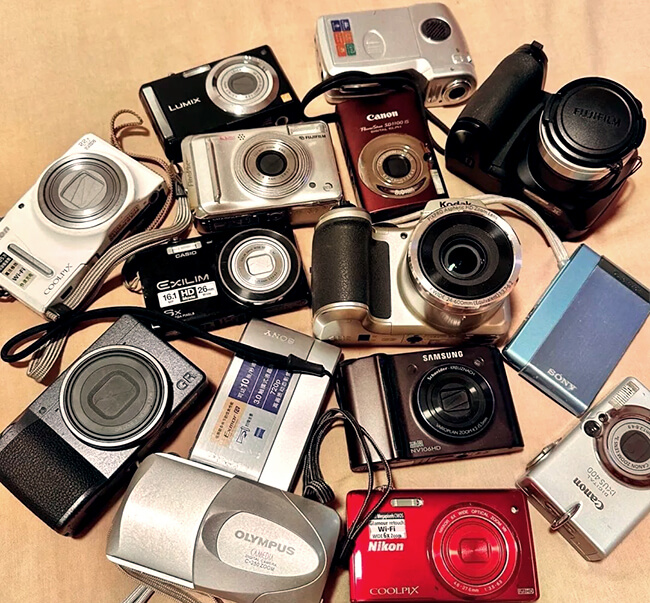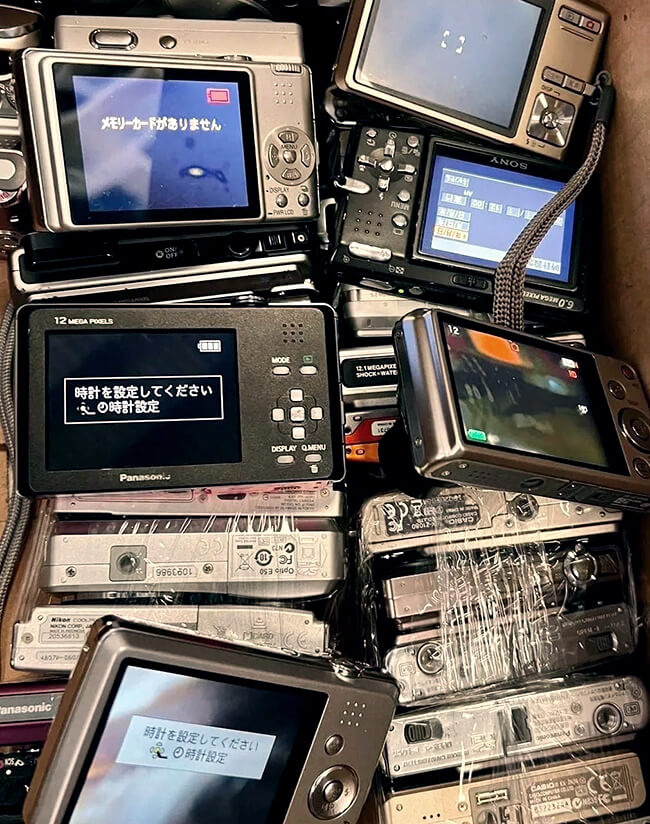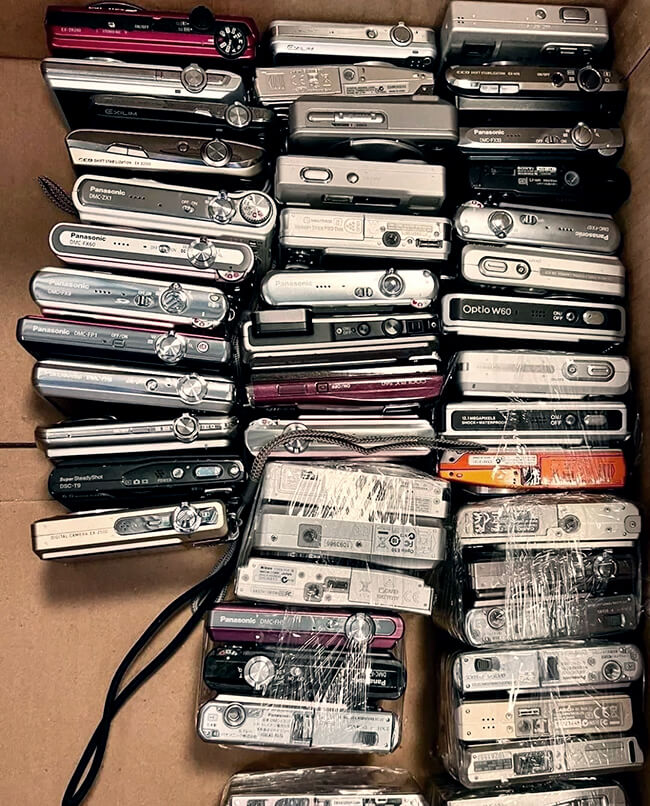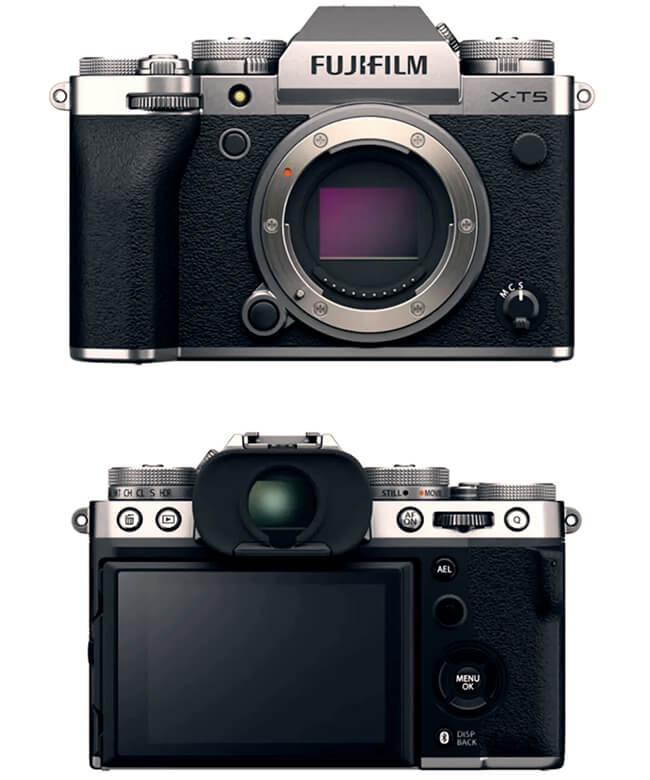Discussion on Common Views About Camera Purchase

Regarding the statement "Buy the most expensive camera within your budget; getting it right in one step is the most cost-effective," an expensive tool is not necessarily more suitable. It is not true that the more expensive, the better. Only the camera that suits you is the best camera.
Regarding the view "Equipment is not important; technology and aesthetics are what matter," choosing the right type of equipment that suits you is important, while the detailed differences between models have little impact. It's like choosing a writing brush, a gel pen, or a pencil for an exam is crucial, but choosing different brands of gel pens has negligible influence.
Four Dimensions to Understand Cameras

The four dimensions of image quality, focusing, the sense of ritual during shooting, and the unique color of the camera itself are the factors to consider when buying a camera.
Image Quality: It does not only refer to clarity; good image quality has a sense of texture. The general judgment criteria are that the larger the sensor size and the higher the pixel count, the better the image quality is likely to be. Moreover, image quality has little correlation with the release time but is related to the release price at that time. The image quality of a flagship model from 10 years ago is probably better than that of current entry-level models (temporarily ignoring the impact of old lenses).
Focusing: Generally, cameras released later have better focusing performance. Now, the focusing ability of regular entry-level cameras is better than that of flagship models from 10 years ago, and the focusing ability has little to do with the pricing. The focusing performance of cameras from the "Big Three" (Sony, Canon, Nikon) is generally better than that of brands such as Fujifilm, Hasselblad, and Ricoh. The focusing speed of new cameras in the past two years is very fast, with small differences.
Sense of Ritual in Appearance: Some cameras, although inefficient, can bring pleasure through their appearance, operation methods, shutter sound, etc., making people quickly enter the state of flow during shooting. However, some cameras with strong performance give a "work-like" feeling when taking photos outdoors. The importance of the sense of ritual varies from person to person and requires hands-on experience.
Imaging Characteristics: Leica, Fujifilm, CCD, film, etc., have obvious characteristics in imaging colors. The post-editing can change the color of photos taken by the "Big Three", but the subjective feeling during the process is different.

Is a Second-Hand Camera Worth Buying?
In the photography circle, second-hand cameras have always been an unavoidable topic. For beginners with a limited budget, or veterans who want to experience different models at a low cost, a second-hand camera in good condition can not only lower the entry threshold but also avoid the distress of depreciation of new cameras.
"Some film cameras won't lose much if you sell them second-hand after using them for a while."
However, the second-hand market is very tricky. If you buy the right one, it's a good deal; if you buy the wrong one, it may turn into "spending money to learn a lesson".
Today, combining professional advice, let's talk about how to choose a second-hand camera.
1. First, Figure Out: Why Do You Buy Second-Hand?
The core advantages of buying a second-hand camera lie in "cost-effectiveness" and "diversity of experience".
Models such as film cameras, Fujifilm, Olympus, Leica M series, instant cameras, and CCD compact cameras are very suitable as a second device besides the main camera. The second-hand price is much lower than that of new ones, and you won't lose much when reselling after experience. But different needs correspond to different key points in purchasing:
Beginner Entry: Priority should be given to models with complete basic functions. Focus on whether the focusing and image quality meet the standards, and there's no need to pursue "nostalgic models".
Experience Characteristics: Want to try Leica's colors or Fujifilm's film simulation? Second-hand is a good way to experience them at a low cost, but you have to accept the possible operational shortcomings of such models (such as the manual focusing of Leica M series).
Cost-Effective Flagships: Older flagship models (such as Nikon D800 and Canon 5D4 from 10 years ago) may have better image quality than current entry-level models, which are suitable for users with limited budgets but pursuing performance.
Fujifilm XT50: Its image quality and focusing are neither the best nor the worst. It has a little sense of ritual but not much. Its imaging characteristics are obvious but easy to get tired of. The pricing is slightly high. The body is good-looking and has unique filters, which can give beginners sufficient positive feedback when starting.
Ricoh GR3: It is small in size, with a sensor larger than that of a mobile phone, and has unique imaging. Its focusing is worse than that of Fujifilm. The focal length is similar to that of the main camera of a mobile phone, which is difficult for beginners to master. It is not recommended for beginners but more suitable for veterans.
CCD Cameras: Their image quality is poor but the colors have characteristics. Most of them have flash, and the fun is higher than that of mobile phones. They are not suitable for practicing photography skills because of the small screen and difficult parameter adjustment.
Disposable Film Cameras: Similar to CCD cameras, they are loaded with film. After shooting, they are sent to Taobao scanning stores. They have unique colors and are suitable as a second camera. The experience is unique, and you won't lose much when selling them second-hand.
Leica M Series: They have unique colors, good operation feeling and shutter sound, but inconvenient focusing. Some models have the hidden danger of coating peeling. They are suitable for friends with sufficient funds who like street photography.

Hasselblad X2D: It has top image quality, slightly slow focusing, distinctive sense of ritual and colors, top screen viewing experience, simple operating system, and its color science does not rely on post-processing. It is suitable for wealthy beginners and veterans to start with. However, its color temperature is not as accurate as rumored to restore the naked eye, and it is mostly cold in most cases.
Mobile Phones: They perform strongly in some scenarios, but are far inferior to cameras in others, with varying degrees of fun. Some people can only carefully observe the world when holding a camera.
2. Core of Avoiding Pitfalls: Check These 3 Types of "Hard Injuries"
The "pitfalls" of second-hand cameras are mostly hidden in invisible details. The core dimensions such as image quality, focusing, and maintenance must be focused on checking:
1) Core Performance: Image Quality and Focusing Cannot Be Compromised
Sensor: The sensor, the "heart" of image quality, is the key factor affecting image quality. The larger the sensor size, the better the image quality is likely to be. When checking, pay attention to:
After removing the lens, observe whether the sensor has mold spots or dust (especially for older models). Dust may cause black spots in photos.
Take a test shot of a solid color surface (such as a white wall) and zoom in to check for bad pixels (fixed-color spots). Bad pixels will directly affect imaging (damaged by laser).
Focusing: Older models need to be more careful. "The newer the camera, the better the focusing", but the second-hand market is mostly old models, so it is necessary to focus on testing:
Is the auto-focus accurate? Is the tracking smooth during continuous focusing (try shooting moving objects)?
For manual focusing models (such as Leica M series), check whether the linkage between the lens and the body is smooth.
Is there "focus shift" (take a photo of a newspaper and zoom in to see if the text is clear)?
What maintenance experience has it had (individual sellers will tell the truth, but most merchants can't explain clearly and are vague).
2) Appearance and Wear: Don't Be Misled by "New-Looking"
Body: Focus on the "stressed parts".
Slight paint peeling and scratches do not affect use, but severe bumps may indicate that the machine has been dropped, so be alert to loose internal parts.
Check: the overall appearance; whether the shutter button and dial are sensitive and have no jamming; whether the battery compartment and memory card slot are clean; whether the contact points are oxidized (oxidation will cause unstable power supply).
Lens: More "delicate" than the body. The quality of the lens directly affects imaging, and there are differences between different lenses. Special attention should be paid to second-hand lenses:
Whether the lens has scratches or mold spots (mold spots will spread and seriously affect image quality).
Are the aperture blades flexible? When turning the aperture ring, do the blades open and close evenly without jamming?
Are the zoom/focus rings smooth and have no abnormal noise (which may be internal gear wear)?
3) Special Models: Be Alert to "Inherited Problems"
Some models have "common problems", so you must do your homework before buying:
- Leica M series: Some old models have the hidden danger of "coating peeling" (the lens coating falls off), which will cause the picture to be gray. When checking, observe whether the lens coating is complete against the light.
- Older CCD cameras: "Small screen, difficult parameter adjustment". For second-hand ones, pay more attention to whether the screen is aging (such as display discoloration, flickering).
- Film cameras: Is the shutter accurate? Is the film advance smooth? You can load a roll of waste film for a test shot to feel whether the linkage of mechanical parts is normal.
Replacement parts may no longer be available.
3. Purchase Channels and Trading Skills: Reduce Risks
Priority is given to "individual sellers" rather than "merchants". Machines from individual sellers are mostly for personal use, and the usage traces are more transparent (such as fewer shutter counts). Merchants may have problems such as "refurbishment" and "hiding faults".
Offline transactions are more secure than online transactions (personal opinion); check and test the machine in person.
It's best to inspect the machine in person during the transaction, take test shots with your own memory card, and export the photos on the spot for inspection.
Find out the "source" and refuse "secretly faulty machines". Ask clearly whether the machine is "domestic version" (after-sales service is guaranteed) and whether it has been repaired (repair records can be requested).
Avoid buying "water-damaged machines" and "disassembled and repaired machines" - such machines may work normally in the short term but have a high probability of failure in the later stage.
Keep certificates and clarify after-sales service.
Even for personal transactions, ask the seller to write a simple receipt, indicating the model, condition, transaction time, and "normal function" and other information. Agree on "7-day no-reason return" (in case of hidden faults, they can be found in time) and avoid the overlord clause of "no return once sold".
Keep purchase certificates, clarify after-sales responsibilities, and avoid buying refurbished or faulty machines.
4. Final Reminder: Rationally look at, "Cost-Effectiveness"
"Choosing the right type of equipment is more important than be torn between model details."
The same applies to buying second-hand cameras:
Don't buy a model that doesn't suit you just because it's "cheap" (for example, a beginner buying an old manual focus film camera may have more frustration than fun).
When the budget is limited, give priority to ensuring "complete functions" rather than pursuing "perfect condition" (slight usage traces do not affect performance but can save a lot of money) - function > appearance condition.
If it's for short-term experience, choose models with high retention rate (such as Fujifilm XT series, Leica Q series), which are more convenient to resell in the future.
The charm of second-hand cameras lies in approaching the "ideal equipment" at a lower cost.
As long as you do your homework and carefully inspect the machine, you can avoid most pitfalls and make every penny count.
For photography, what's important is not how new the equipment is, but whether it can help you take the pictures you want.
Related Tags: Buy a camera Fujifilm XT50 Ricoh GR3
